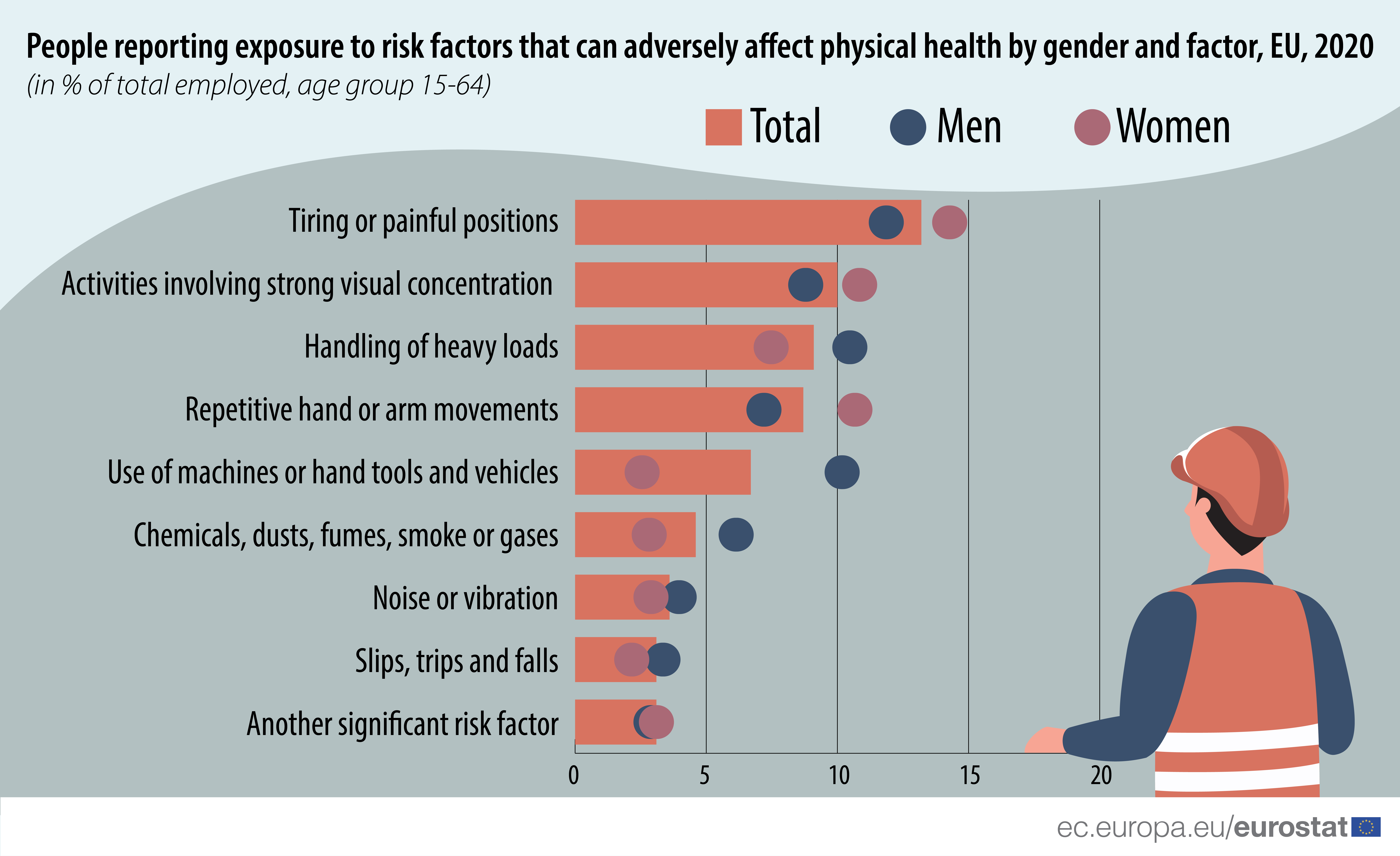In 2020, 2.4% of the people employed or those not employed but who had worked during the year before the interview in the EU reported at least one accident at work in the previous 12 months, a significantly lower share than 2.8% recorded in 2013, which can be partly due to the COVID-19 pandemic. This information comes from data published by Eurostat today on accidents at work and work-related health problems from the EU Labour Force Survey (EU-LFS) ad-hoc module.
The occupational category with the highest share of people reporting an accident at work at EU level in 2020 was the craft and related trades workers (4.4%), followed by the plant and machine operators and assemblers and the skilled agricultural and fishery workers (both 3.4%). People with elementary occupations (3.3%) also recorded a share exceeding 3% in 2020.
Source dataset: hsw_ac7
At a national level, the broad group of skilled agricultural, forestry and fishery workers, craft and related trades workers recorded the highest share of people reporting an accident in 15 out of 18 EU Member States for which data is available for all groups. Focusing only on this occupational group, the highest shares of people reporting an accident were recorded in Finland (19.1%), Sweden (11.7%) and Luxembourg (10.2%). By contrast, shares below 2% were found in Latvia, Croatia, Romania, Hungary and Lithuania.
Tiring or painful positions were the most common physical risk factor at work
For 13.2% of the workers at the EU level, tiring or painful positions were the most serious risk factor for their physical health at work. This was followed by activities involving strong visual concentration (10.0%), handling of heavy loads (9.1%) and repetitive hand or arm movements (8.7%).
Source dataset: hsw_exp4
Tiring or painful positions were more commonly seen as a risk by women than men (14.5% vs. 12.2%). The same pattern can be seen for repetitive movements, which was declared as the most serious physical risk factor by 10.8% of women against 7.0% of men.
The largest gender gap was observed in the use of machines or hand tools and vehicles, as 10.3% of men deemed it the most serious risk factor at work compared with 2.4% of women.
More than half of employed people with mental risk at work in 11 EU Member States
Data also indicated that 44.6% of employed people aged 15-64 reported facing risk factors for their mental well-being at work.
In 11 Member States out of 27, the share of people reporting work-related mental risks exceeded half of all employed people. Sweden (76.4%), Greece (69.1%) and Luxembourg (67.4%) held the highest values, while Czechia (33.8%), Lithuania (26.7%) and Germany (25.8%) held the lowest shares.
For more information:
- Statistics Explained article on Self-reported accidents at work - key statistics
- Statistics Explained article on Self-reported work-related health problems and risk factors
- Last year marked the beginning of the COVID-19 pandemic, which has had a strong impact on business, hence the specificities of the labour market and economic situation of each country should be kept in mind when analysing these results. Please consult the Statistics Explained article on Employment - annual_statistics.
- Statistics Explained article on EU labour force survey
- Database on the Labour Force Survey (LFS)
- Dedicated section on the Labour Force Survey (LFS)
- Database on Health and safety at work
- The data were collected within the framework of the 2007, 2013 and 2020 ad hoc modules of the EU labour force survey (EU-LFS).
To contact us, please visit our User Support page.
For press queries, please contact our Media Support.



